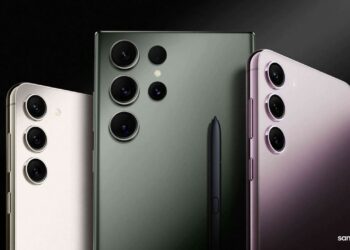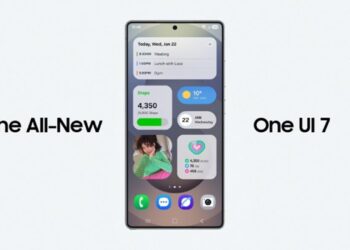The smartphone battle is taking a different turn.
Tech giants such as Samsung, LG, Google, Motorola, Huawei, Xiaomi and many others have found ways to give their devices optimal hardware performances and in fact, they are almost at the top of their games when it comes to smartphone hardware. The result of this is that attention is now turning to software.
This 2017 has seen quite an interesting set of smartphones unveiled. Talk of the HTC U Ultra and ASUS ZenFone AR in January and later the LG G6, OnePlus 5, Xiaomi Mi 6, Samsung Galaxy S8, HTC U11, Sony Xperia XZ Premium, Moto Z2 Force, LG V30, Samsung Galaxy Note 8, Google Pixel 2 XL, Xiaomi Mi MIX 2 and recently the Huawei Mate 10. A quick look at any of these gadgets’ hardware will tell you that the brains behind them have come a long way to reach here. If anything, there’s not so much left ahead in terms of hardware innovations, at least based on what the mainstream consumer wants in a phone.
With this in mind, attention has been switching to the software side of things. The emergence of artificial intelligence (AI) has sent many of these companies into a frenzy, with each one of them looking to grab a significant chunk of the growing market and break away as soon as possible. Google and Samsung have been up there, but recently, Huawei joined the battle with the Mate 10. According to WIRED, the next big thing in the smartphone industry is “high-end handsets that harness AI to drive advanced features like smart photography, machine translation, and predictive behavior.” And I couldn’t agree more.
In short, starting from 2018 onwards, the smartphone world is going to be all about software, which brings me to the main subject of this article: why your next phone must have at least Android Oreo out of the box.
For the uninitiated, Android Oreo is the latest version in town and only a handful of phones have it out of the box, among them Google’s Pixel 2 and Pixel 2 XL, Sony’s Xperia XZ1 and XZ1 Compact as well as Huawei’s Mate 10, Mate 10 Pro and Mate 10 Porsche Design. The OS has rolled out to the original Pixels and 2015’s Nexus family as an OTA.
Just like any other OS, the new Android Oreo brings a lot to the table when compared to the previous Nougat. Of course, there’s a whole new bunch of new features and while some of them might be useful, some might never make sense to the mainstream smartphone user. Android Nougat has been around for over a year now but according to the latest Android distribution stats (October 2017), the OS is only running on less than 20% of the more than 2 billion Android devices in the world while Oreo is installed on 0.2%.

The many OEMs that use different versions of Android are what basically slow down the process of Android OS adoption. Unlike Apple where the company controls software updates to all iDevices, Google only controls software updates to the Nexuses and Pixels. This means the likes of Samsung, Motorola, LG and other Android partners have exclusive control over how and when software updates are rolled out to their respective devices. Google makes the AOSP available for download early enough, but these OEMs take their time to work on the updates – and others choose not to.
Perhaps the reason it takes too long to implement the changes that Google makes to the Android OS every now and then is the workload involved. It’s not an easy job to maintain software. It takes hours of dedication and some companies can simply not afford this, especially due to the costs involved. But with the new Android Oreo, Google is making things a lot easier for OEMs by reducing the workload involved with respect to implementing software updates.
Up until now, Android smartphone OEMs can be forgiven for their lackluster approach to software updates probably because they were focusing on hardware. Now that hardware is basically where we want it, attention should for sure turn to software. Besides, in a smartphone world where software is set to be the main battleground, the last thing Android OEMs can do is stick to their old habits of slow updates or having none at all.
As noted, the workload involved in maintaining software can be scary. However, over the years, Google has been working on a way to make the entire process of rolling out software updates shorter and less costly for partner OEMs. And finally, the company found a breakthrough thanks to Project Treble.
What is Project Treble?
Project Treble is Google’s solution to Android’s biggest problem – the lack of timely software updates. Ever since the first commercial version of Android went live about 10 years ago, there hasn’t been any bigger change to the OS’ low-level system architecture than Project Treble, the company notes.
Typically, a new Android update goes through several steps before hitting your phone. Google works on the OS framework and does the publishing of the AOSP for the latest version on a public domain. From there, chipset manufacturers like Qualcomm, Samsung and MediaTek pick up the open source code and modify it to fit their specific processors. When done, they pass the modified version to Android smartphone makers, who, once again, modify the new release to fit their own preferences. For instance, Samsung adds Experience (previously TouchWiz), HTC adds Sense UI, Infinix adds XOS, Tecno adds HiOS, and so on.
In Kenya, we don’t get so many carrier-locked smartphones and as such, smartphone makers don’t need to work with the likes of Safaricom, Airtel or Telkom to test the new release. But in other countries, they’ll have to work with these carriers to test and certify the new software before finally rolling it out to end users.
As you can see, this is quite a long process that can take lots of time and money. However, Project Treble is here to cut the process by more than half. The platform will do this by borrowing a leaf from what happens with smartphone apps. For the billions of Android devices on the market, app developers don’t need to write a specific code for each of these devices, rather, they only create a single app that works perfectly on different hardware from different OEMs.
Project Treble wants to separate the main Android OS framework from the vendor implementation (the stages where processor and device makers have to modify the code to suit their different hardware). When Google makes changes to an OS, Android OEMs are also forced to modify it. After Project Treble, vendors will not be required to make changes whenever Google makes changes to Android, instead, their original modifications – which usually take time to implement – will keep their place while Google’s changes are implemented in the background.

This means that OEMs will no longer have excuses when it comes to rolling out new software updates on time due to the significantly reduced workload. But as pointed out, Project Treble comes as part of Android Oreo and it will get better in future Android releases. So, if you are the type of person who always wants to have the latest software installed but somehow any of those Google Nexuses and Pixels has been hard to come by, your best bet of getting timely updates in future is to buy a smartphone with Android Oreo – and beyond – out of the box.
I know this is the time you’ll see all sorts of affordable phones with Android Nougat selling locally. If I were you, I wouldn’t fall for this trick, unless you don’t really care about software updates – arguably the most important aspect of a smartphone.












